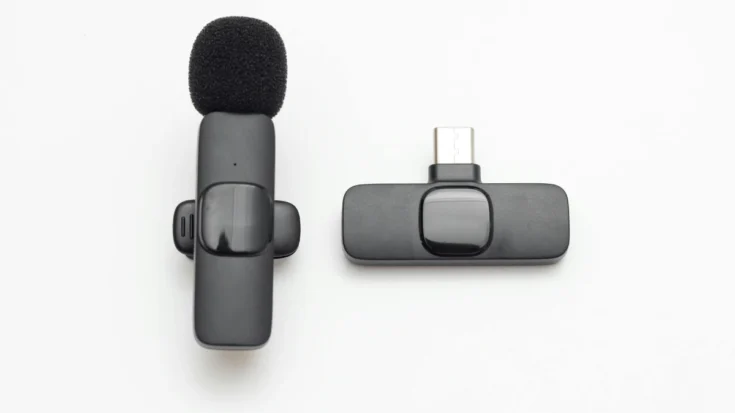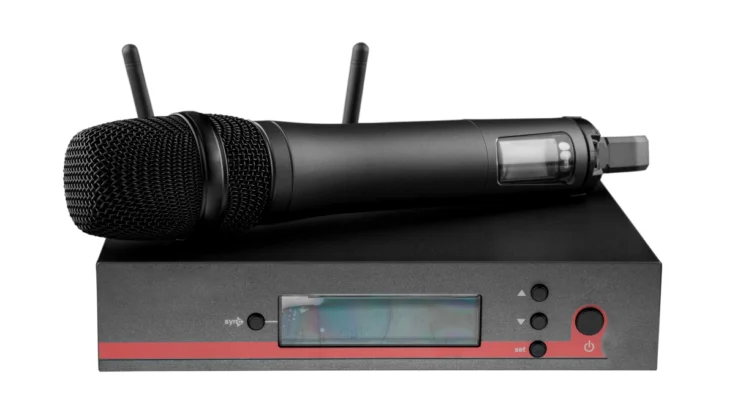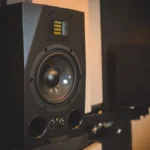Microphone receivers are an important part of wireless microphones, because sound cannot be produced without this tool.
Microphone receivers function to receive signals from wireless microphones and convert them into audio to be distributed in various output devices.
Therefore, it is important to know the function of the microphone receiver, how it works, and its regulations in its use in Indonesia.
Also Read
Table of Contents
What is a Microphone Receiver?

A Microphone Receiver is part of a wireless microphone that receives sound signals sent by the microphone through the transmitter via radio waves.
The sound signal generated by the microphone is received by the microphone receiver and then converted the radio waves into audio signals that can be further processed or forwarded to other audio devices, such as speakers or recording systems.
How a Microphone Receiver Works
Broadly speaking, the microphone receiver works by receiving sound signals sent by the transmitter (transmitter) via radio waves, then converting them back into audible audio signals. Here’s a more detailed explanation of how the receiver works:
- Receiving signals: The receiver is equipped with an antenna to receive radio wave signals emitted by the transmitter.
- Demodulate: Once the signal is received, the receiver’s demodulator processes it to convert the radio signal back into the original audio signal.
- Signal amplification: To be heard clearly, the demodulated audio signal is then amplified.
- Connection to an output device: Receivers are usually connected to speakers or other audio systems via audio cables to play back the received sound.
The Function of the Microphone Receiver

The role of the microphone receiver is so important in wireless microphone devices. Here are the functions of the receiver:
1. Receiving sound signals
The receiver have the main function of receiving signals sent by microphones. The receiver is able to capture the various sound frequencies produced by the microphone accurately thanks to its high sensitivity.
2. Processing sound
In order to be processed further, the sound signal received by the receiver will then be processed. This process includes signal amplification, filtering to reduce noise, and other adjustments to maximize the sound produced.
3. Converting radio signals into audio signals
The receiver are capable of converting received radio signals into audio signals that can be used by output devices such as speakers, amplifiers, mixers, or recording devices. This process is done through the audio output on the receiver, which connects to other audio devices to produce good quality sound.
4. Frequency and channel settings
The frequency and channel settings feature allows you to customize the use of your microphone receiver in frequency-dense environments or when using multiple microphones simultaneously.
5. Ensuring stable connectivity
The receiver is also responsible for ensuring stable connectivity between the microphone and the output device. Good connectivity reduces the risk of signal interference or loss, thus ensuring consistent sound quality.
Microphone Receiver Regulations in Indonesia

Microphone receiver uses communication technologies such as Short Range Devices (SRD) that operate within a specific frequency spectrum. In Indonesia, any SRD-based wireless device is required to have DJID (Directorate General of Digital Infrastructure) under the Ministry of Communication and Digital (KOMDIGI).
Microphone receiver regulation is based on KEPMEN No. 260 Tahun 2024, which requires all radio frequency-based devices, including microphone receiver, to meet specific technical standards before being sold in the country.
The DJID certification ensures that the product meets government safety and quality regulations and does not interfere with other communication devices. The certification process involves technical testing, such as frequency adjustments, safety checks, and compatibility with the surrounding environment.
Once the tests are completed, products that pass are listed in a Test Result Report, which confirms that the product is safe and ready for sale in Indonesia. This report reassures customers that the product meets technical standards and is secure.
For companies wanting to sell a microphone receiver in Indonesia, Type Approval Certification Services for ICT Products are available to assist with this process. This service includes preparing technical and legal documents, conducting required testing, ensuring compliance with regulations, helping companies streamline the certification process, and giving consumers confidence in certified products.


















